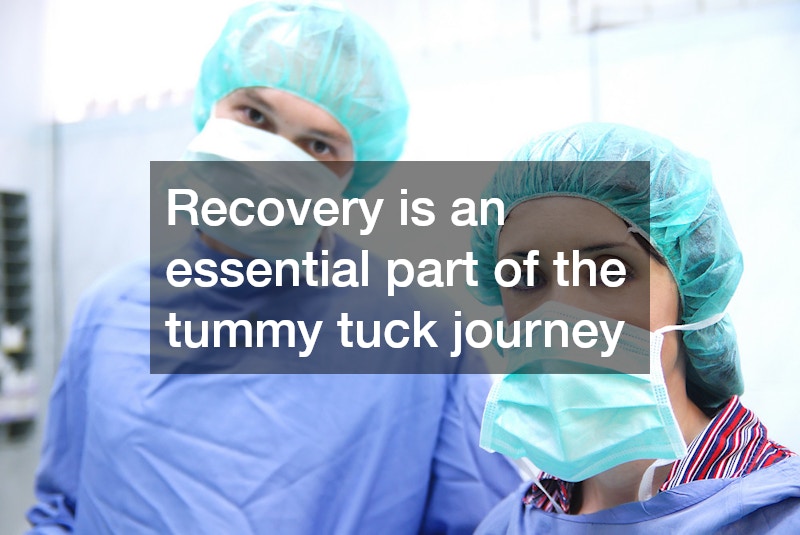
A flat, toned stomach is often seen as a sign of fitness and confidence. However, age, pregnancy, significant weight loss, or genetics can leave behind stretched skin and weakened abdominal muscles that no amount of diet or exercise seems to fix. For those who want to restore their midsection, a tummy tuck can be a transformative solution. But what exactly does the procedure involve, and what should you expect from start to finish?
Understanding the Basics of a Tummy Tuck
A tummy tuck, also known as abdominoplasty, is a cosmetic surgical procedure designed to remove excess skin and fat from the abdomen while tightening weakened or separated abdominal muscles. The goal is to create a smoother, firmer abdominal profile.
Unlike liposuction, which only removes fat, a tummy tuck addresses both excess tissue and underlying muscle structure, making it ideal for individuals with loose skin or muscle separation, often referred to as diastasis recti.
Who Is a Candidate for a Tummy Tuck?
Not everyone is a suitable candidate for a tummy tuck. This procedure is best for healthy men and women who are close to their ideal weight but struggle with sagging abdominal skin, stretched muscles, or stubborn fat deposits. Women who have gone through pregnancy often choose a tummy tuck to restore their abdominal area, while individuals who have lost a significant amount of weight may seek the surgery to remove excess skin.
It’s important to note that a tummy tuck is not a weight-loss procedure. Instead, it’s intended for body contouring and improving abdominal firmness and appearance. Candidates should be non-smokers, maintain a stable weight, and have realistic expectations about the outcome.
The Tummy Tuck Procedure Step by Step
The tummy tuck process involves several stages:
-
Consultation and Planning – Before surgery, patients meet with a plastic surgeon to discuss goals, evaluate abdominal structure, and determine the best surgical approach. Photographs and medical history are reviewed to customize the procedure.
-
Anesthesia – On the day of the surgery, anesthesia is administered for comfort. This may include general anesthesia or intravenous sedation, depending on the surgeon’s recommendation.
-
Incision Placement – A horizontal incision is typically made just above the pubic area, extending between the hipbones. The length of the incision depends on how much excess skin needs to be removed. In some cases, a second incision is made around the navel to address upper abdominal skin.
-
Repairing Muscles and Removing Skin – The surgeon tightens weakened abdominal muscles by suturing them closer together, creating a firmer midsection. Then, excess skin is trimmed, and the remaining skin is pulled downward for a tighter, smoother look.
-
Navel Repositioning – Because the skin is pulled down, the navel may need to be repositioned to maintain a natural appearance.
-
Closing Incisions – The incisions are carefully sutured, and surgical dressings are applied. Some patients may also have small drainage tubes placed to remove excess fluid.
Recovery After a Tummy Tuck
Recovery is an essential part of the tummy tuck journey. Most patients take one to two weeks off from work and avoid strenuous activity for at least four to six weeks. Swelling, bruising, and discomfort are normal in the first days following surgery, but these effects gradually improve with time.
Wearing a compression garment helps reduce swelling and supports healing. Patients are encouraged to walk gently soon after surgery to promote circulation. Full recovery and final results may take several months, as swelling continues to subside and scars gradually fade.
Benefits of a Tummy Tuck
The benefits of a tummy tuck go beyond aesthetics. While the primary goal is to achieve a flatter, more toned abdomen, many patients also experience improved posture and reduced lower back pain due to strengthened abdominal muscles. The procedure can also help eliminate skin irritation or infections caused by excess folds of skin.
Perhaps most importantly, a tummy tuck can enhance self-confidence. Wearing fitted clothing, swimwear, or simply looking in the mirror often becomes a more positive experience after surgery.
Risks and Considerations
Like any surgical procedure, a tummy tuck carries risks, including infection, poor wound healing, fluid accumulation, and scarring. Choosing a board-certified plastic surgeon with experience in abdominoplasty greatly reduces these risks and increases the likelihood of a successful outcome.
Patients should also be aware that while results are long-lasting, significant weight fluctuations or future pregnancies can affect the outcome. For this reason, many surgeons recommend waiting until after completing childbearing before pursuing the procedure.
Is a Tummy Tuck Right for You?
If you’re struggling with loose abdominal skin, separated muscles, or stubborn fat that doesn’t respond to diet and exercise, a tummy tuck may be the solution. The procedure offers both functional and cosmetic benefits, helping patients feel more comfortable and confident in their bodies.
By understanding what a tummy tuck entails—from consultation to recovery—you can make an informed decision about whether this procedure aligns with your goals. A consultation with a qualified plastic surgeon is the best way to explore your options and determine the right approach for your unique needs.
